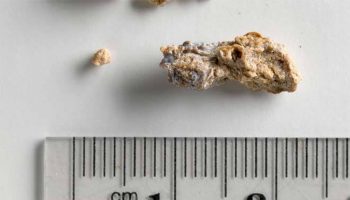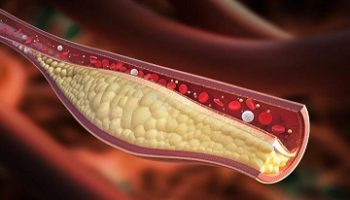MUSHROOMS: THE UMBRELLA FOOD
These ancient umbrella shaped fungi have been a part of the human cousine for as long as memory serves. My grandma used it in making soup when I was a little dyke and I cann virtually remember the taste tempting my buds. Well, it has always been my desire to dig into its health benefits and i’m glad I got to do that today. I always share, you guys know that!
Health Benefits of Mushrooms
Immune System Enhancement:
In a remarkable way, unique phytonutrients found in mushrooms change the way the white blood cells go about their business. In some cases, they prevent white blood cells from becoming active when they would be better off remaining inactive. In other cases, they trigger white blood cell activity when more activity is needed. The list of immune-impacting phytonutrients in crimini mushroom is both unusual and lengthy. It includes beta-D-glucans, fucogalactans, APO (2-amino-3H-phenoxazin-3-one), p-tolyl-hydrazine, and a wide range of substances involving unique combinations of protein-plus-carbohydrate components. The role of a healthy immune system in helping protect us against arthritis, development of cancer, and development of cardiovascular disease has been examined with a focus on dietary mushroom intake, and evidence suggests that crimini mushrooms can help lower our risk of these health problems by supporting balanced activities among the white blood cells of our immune system.
One final note may be in order when thinking about crimini mushrooms and our immune system. One key nutrient for healthy immune system function is vitamin D, and crimini mushrooms do provide measurable amounts of this vitamin. However, the relationship of vitamin D to mushrooms can be complicated. The form of vitamin D most commonly found in mushrooms is ergosterol (sometimes called vitamin D1). This form of the vitamin is not active in humans as a hormone. With the help of sunlight, some of the ergosterol in mushrooms can be converted into ergocalciferol (sometimes called vitamin D2). However, since mushrooms do not require sunlight for growth, they are sometimes produced without exposure to light and, in this case, would not provide D2. (Some mushroom growers deliberately expose mushrooms that are being grown in the dark to a short burst of light that can help some of the D1 in mushrooms get converted into D2.) Even though D2 can be useful to our cells, this Dthis D2 form of vitamin D is still not the fully active hormonal form. That fully active form (vitamin D3, cholecalciferol) is not provided by mushrooms whether exposed to light or not. From our perspective, the bottom line for vitamin D and mushrooms is much like the bottom line for vitamin B12 and mushrooms. You cannot count on mushrooms to be helpful with your vitamin D requirements (just like you cannot count on them to be helpful in meeting your vitamin B12 requirements), but you may end up getting some bonus vitamin D (and vitamin B12) benefits from crimini mushrooms, along with their other amazing health-supportive nutrients.
Anti-Inflammatory Benefits:
Risk of many common health problems—including type 2 diabetes, cardiovascular disease, and certain types of cancer—is increased by the presence of chronic unwanted inflammation. Many factors can contribute to chronic inflammation, and these factors include overproduction of molecules in our body that tell it to launch an inflammatory response. If production of these molecules—called pro-inflammatory molecules—can be reduced, chronic inflammation can be reduced or sometimes prevented altogether. Intake of whole fresh mushrooms, mushroom extracts, and powdered/dried mushrooms has been shown to accomplish precisely this result—blocked production of pro-inflammatory molecules.
Antioxidant Benefits:
There are two outstanding types of antioxidant support provided by crimini mushrooms. The first type involves their nutrient composition, and the second type involves their impact on oxidative metabolism. In terms of nutrients, you don’t have to look far to find key players in antioxidant world: crimini mushrooms provide an excellent amount of selenium, and a very good amount of zinc and manganese. All three minerals are critical antioxidant nutrients and are also required for the functioning of antioxidant enzymes. The antioxidant content of crimini mushrooms also includes some unusual antioxidant molecules. The best studied of these molecules is ergothioneine (technically identified as 2-mercaptohistidine trimethylbetaine). Ergothioneine is an amino acid-like molecule that has not only been shown to have antioxidant properties but to also specifically help prevent oxidative damage to DNA (our genetic material) and proteins.
Cardiovascular Benefits:
Since the health of our circulatory system depends on great antioxidant protection and effective regulation of inflammation, it is not surprising to see crimini mushrooms providing impressive cardiovascular benefits. This mushroom is simply to rich in antioxidant and anti-inflammatory nutrients to go unheralded in this cardiovascular area. As might be expected, research studies show that crimini mushrooms can help protect us from cardiovascular disease by protecting our blood vessels from oxidative damage as well as chronic inflammation. This protection has been specifically shown with respect to the aorta–our body’s largest blood vessel. Cardiovascular protection by crimini mushrooms extends beyond these antioxidant and anti-inflammatory areas, however. Research studies on laboratory animals with high blood levels of total cholesterol, LDL cholesterol, and triglycerides (TGs) have also shown that daily intake of crimini mushrooms over a period of 1-2 months can reduce levels of all three blood fats (total cholesterol, LDL cholesterol, and TGs.
Anti-Cancer Benefits:
A fascinating twist in the story of crimini mushrooms, immune support, and anti-inflammatory benefits involves cancer cells. In some ways, cancer cells can be considered the opposite of healthy cells. With healthy cells, we want to avoid chronic inflammation, and we want our immune system to maintain a sense of respect for the miraculous functioning of each healthy cell. With cancer cells, the situation is somewhat reversed. In the case of cancer cells, we would like our immune system to be unusually active and to send out white blood cells that can dismantle and deactivate cancerous or cancer-like cells.
In some situations, it can also be helpful for inflammatory activity to be increased in cancer cells. Increased activity of pro-inflammatory molecules (for example, prostaglandin E2, also called PGE2) can sometimes cause a cancer cell to shift itself over into a process called apoptosis (programmed cell death). In this case, the cancer cell can be prevented from causing more disruption among healthy cells.
Selenium is a mineral that is not present in most fruits and vegetables but can be found in mushrooms. It plays a role in liver enzyme function, and helps detoxify some cancer-causing compounds in the body. Additionally, selenium prevents inflammation and also decreasestumorgrowth rates.
The vitamin D in mushrooms has also been shown to inhibit the growth ofcancercells by contributing to the regulation of the cell growth cycle. The folate in mushrooms plays an important role in DNA synthesis and repair, thus preventing the formation of cancer cells from mutations in the DNA.
Weight management and satiety:
Dietary fiber plays an important role in weight management by functioning as a “bulking agent” in the digestive system. Mushrooms contain two types of dietary fibers in their cell walls: beta-glucans and chitin which increase satiety and reduce appetite, making you feel fuller longer and thereby lowering your overall calorie intake.
Recent Research:
For women who are at risk of hormone-dependent breast cancer, mushrooms may be an important diet addition. These mushrooms have recently been shown to be a significant source of conjugated linolenic acid (CLA)—a unique type of fatty acid that can bind onto aromatase enzymes and lessen the production of estrogen. Since some breast cancer tumors are dependent upon estrogen for their growth, this blocking of the aromatase enzyme by the mushrooms’ CLA may lower risk of this breast cancer type. The presence of CLA in mushrooms is fascinating, because we typically expect to find this type of fatty acid exclusively in animal foods like milk, cheese, and meats.
Potential health risks of consuming mushrooms:
Although wild mushrooms have been part of the human diet for several centuries, uncultivated wild mushrooms may pose a risk to those unable to distinguish between those safe and dangerous for consumption. Eating wild mushrooms that are toxic to humans can cause severe illness and sometimes even death. Studies have also shown that some wild mushrooms contain high levels of heavy metals and other harmful chemicals. In order to avoid these dangers, it is best to consume mushrooms that have been cultivated under appropriate conditions.
previous article
THE BITTER BEAUTY
next article
PSILOCYBIN: THE SECRET IN MUSHROOMS
The author Prince
Hi, I’m Prince.. a registered Dietitian, an avid reader and a passionate writer. I hope you enjoy my articles as much as I enjoy writing them






